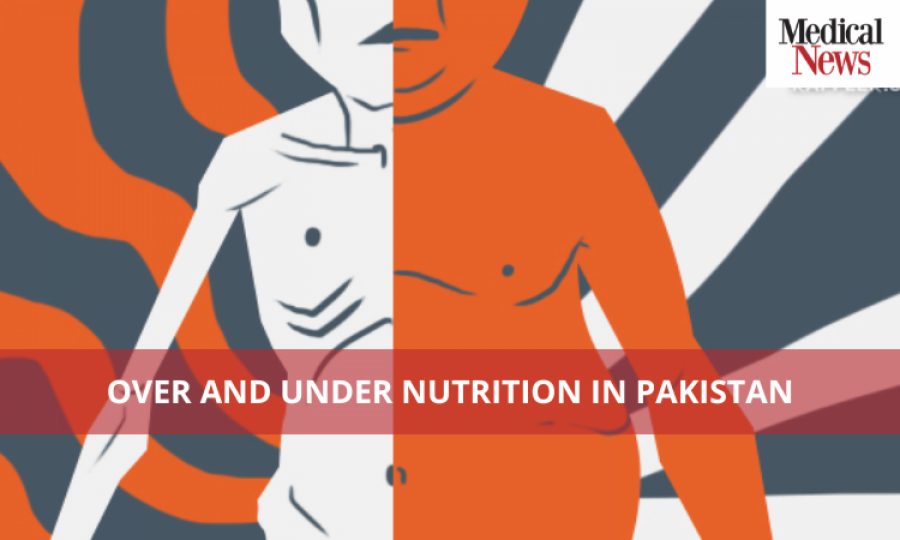Over and Under Nutrition in Pakistan

The term malnutrition refers to a person not receiving proper nutrition which impairs overall health and encompasses both undernutrition and overnutrition. Overnutrition is the state in which there is excessive nutrient intake and excessive energy in the body, leading to obesity. Meanwhile, in undernutrition, there is a lack of sufficient nutrient intake and energy supply which can lead to numerous deficiency-induced disorders.
Incidence
Pakistan has been identified as one of the seven countries that are responsible for one-third of the world's undernourished population. According to UNICEF, almost 10 million Pakistani children suffer from stunting and 8 out of 10 children in Pakistan do not eat the right type and quantity of food. For the first six months of life, only 38% of children are exclusively breastfed. Correspondingly, there is a deficiency of vitamin A in almost half of the children under five years of age, zinc and vitamin D deficiency in 40%, and anaemia in 62%. Overweight children under the age of 5 years are about 9.5%. Additionally, over 48% of women of reproductive age and 52% of children under the age of 5 suffer from anaemia. The situation is so dire that the World Health Organization has found that 45% of deaths in children are associated with undernutrition.
Impact
Undernutrition leads to increased morbidity and mortality. It is linked with nutritional deficiencies like iron deficiency anaemia, delayed wound healing, hormonal abnormalities, immunosuppression, and an increased risk of developing chronic diseases like osteoporosis. Undernutrition in pregnant women is especially alarming as it can lead to several complications associated with birth and increases the risk of infant mortality by almost double the normal amount. Undernutrition also impairs physical and cognitive growth, reduces learning capacity, deteriorates school performance, and lowers adult productivity.
Overnutrition is a global epidemic and leads to overweight and obesity. It is associated with a group of conditions called metabolic syndrome which includes type 2 diabetes, hypertension, and hyperlipidemia. Moreover, it serves as a risk factor for several diseases like cardiovascular disease, inflammatory disorders, stroke, and cancer. Coagulation and fibrinolysis are also impaired. These people may also suffer from sterility and hormonal disorders, sleep apnea syndrome, respiratory failure, and oxidative stress.
Malnutrition also negatively impacts the economy. According to a report by the United Nations World Food Program, lost labourers, healthcare expenses, and lower productivity due to malnutrition cost Pakistan US$7.6 billion every year.
Next Steps
Going forward, Pakistan will have to take several steps to reduce the massively malnourished population. Mandatory food fortification programs focusing on staple foods should be introduced with proper impact evaluation. Nutrition of pregnant and breastfeeding women needs to be prioritized to improve the prospects for healthy childbirth and development. Also, food should be made more affordable for the masses so that everybody has access to a good quality diet. Advanced farming techniques should also be implemented to improve food security by addressing concerns such as soil salinity and improving diet diversity.
Trending
Popular
Smoking’s lingering impact: How long does heart take to heal?
-
Boost your muscle gains with these ...
09:00 AM, 21 Dec, 2024 -
Managing stress no longer a luxury, ...
09:00 PM, 21 Dec, 2024 -
After evening large meals may fuel to ...
06:00 PM, 21 Dec, 2024 -
‘Sleep Apnea is a silent brain ...
03:10 PM, 21 Dec, 2024




